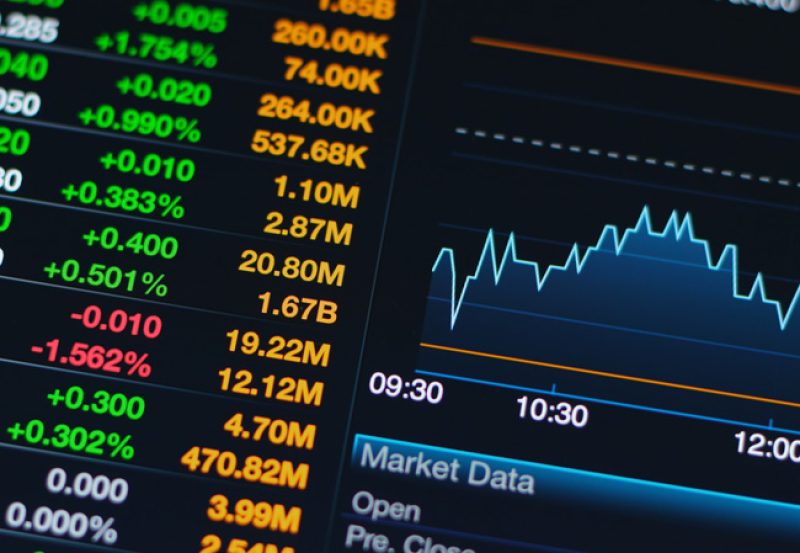by Franklin Templeton Investments blog, Franklin Templeton Investments
The Digest
Last week was volatile for global equity markets, with indices see-sawing from headline to headline, whether it be comments from Federal Reserve (Fed) members or macro data releases. Overall, there was a sense that investor conviction was low, and that positioning, rather than any real confidence in the outlook, drove market bounces. The MSCI World Index declined 2.2%, its sixth week of losses and the longest run of weekly declines since the 2008 global financial crisis. Looking across regions, the S&P 500 Index declined 2.4%, the MSCI Asia Pacific Index declined 2.5% and the STOXX Europe 600 Index rose 0.8%.1
Equity market volatile with conviction low
Last week was typified by low-conviction moves in equity markets, with several headwinds and themes for investor to navigate. To pick out a few key talking points from last week, investors focused on US inflation data, Fedspeak, crypto volatility, and COVID-19 cases in China. In addition, with global markets declining for six consecutive weeks, there is an increasing debate over how much bad news is priced in, and whether markets are now oversold.
Taking a quick look at some of these themes
US inflation data: The US April Consumer Price Index (CPI) release on Wednesday was the main macro data event last week. The headline reading came in higher-than-expected at 8.3% year-over-year (Y/Y), down from. 8.5% previously. The bulls argue the decline from the prior month suggests we are at peak inflation. That said, it was still higher than expectations, with one major reason being airfares, which were up 18.6% from March and alone added about 15 basis points (bps)2 to the core print.
US gasoline prices also hit an all-time high, which will continue to add to inflation and squeeze the consumer ahead of the summer driving season. Ultimately, the number appeared to add to the overall air of uncertainty and, we really need to see more data before calling peak inflation.
Fedspeak: Last week, Fed Chair Jerome Powell reiterated guidance for 50 bp rate hikes over the next two meetings and said it will be “quite challenging” for the Fed to engineer a soft landing, adding that the process of trying to do so will include some pain. In addition, Fed Bank of Cleveland President Loretta Mester backed raising rates by a half point in June and July, but also said that 75 bp rate hikes cannot be ruled out forever. Overall, it was taken as positive that Fed officials seemed to rule out 75 bp hikes for now, but fears over a central bank policy error will likely remain a key narrative in to the second half of the year.
Crypto volatility: The crypto space was also a talking point, with some notable selling hitting the space.
Ukraine fallout: Energy prices remain volatile as the war in Ukraine continues, with Hungary vetoing a European Union (EU) ban on Russian oil and gas price volatility showing no sign of abating. Wheat prices have pushed back towards all-time highs as the supply disruption shows no sign of ending amid a Russian blockade of Ukraine’s remaining ports.
Chinese lockdown: There were some signs of an improving picture in China, as Shanghai reported a 58% drop in systematic cases, with less than 1,000 daily new infections.3 In addition, no cases were found outside quarantine. Cases also fell in Beijing. However, this morning we saw some poor Chinese macroeconomic data, with April Industrial Production down 2.9% Y/Y vs and retail sales down 7.5% Y/Y.
Where next: Given recent declines, there is much discussion around what is priced into market. Sentiment is certainly low, with the CNN Fear & Greed Index now in “Extreme Fear” Territory, a level we have often seen markets bounce from.4
Looking at technical indicators, some markets are beginning to flash oversold signals, which some say may have led to the bounce in European equities last week. The STOXX Europe 600 Index (SXXP) relative strength index (RSI)5 hit 27.7 on Monday, which seemed to help support the market. The last time the RSI was this low, it preceded a 14% rally in SXXP.6
Valuation: With the recent declines in markets, focus has also turned to valuations, which are looking less expensive. The price-earnings ratio (P/E) for the SXXP was back towards the pandemic lows, and while the backdrop is obviously poor, there is arguably more visibility than there was in March 2020.
The Week in Review
Europe
Last week was extremely choppy, but European equities managed to close in positive territory with slight gains. It felt like markets were at the mercy of positioning, given a broader lack of conviction. Familiar fears over inflationary pressures and stagnating growth remained front and centre due to macro data (US/German CPI and UK gross domestic product [GDP]). Volatility in the US technology sector and crypto added to the general sense of unease. However, calming comments from Powell, who reiterating the Fed isn’t actively considering a 75 bp move, helped boost risk sentiment, along with positive headlines out of Asia. The People’s Bank of China (PBOC) and Ministry of Commerce officials jointly said they are committed to fully boosting infrastructure investments this year. With that, we saw an unwind of some crowded trades into the end of the week, while some of the only sectors that have outperformed year-to-date (YTD)—such as energy/miners—were the worst performers last week.
Sector-wise, we saw a clear reversal of YTD trends, with the worst-performing YTD outperforming last week, and vice versa. As such, retailers were up, while basic resources/energy stocks were down. Health care also had a tough week.
Looking at other asset classes: In foreign exchange markets, the trend was continued weakness vs the US dollar. The Swiss franc hit parity vs the dollar for the first time since 2019.7 Bloomberg noted: “Risk aversion usually favours the Swiss franc, but the dollar has emerged as the key haven in a more inflationary environment. Traders have been eyeing the rift between the Swiss National Bank, seen as a laggard when it comes to raising interest rates, and the more hawkish Federal Reserve, leaving the franc struggling in recent weeks”.
In bond markets, there was some respite from rising yields as European yields tightened last week. The German 10-year Bund ended the week at 0.94% (-15 bps) and the Italian 10-year government bond ended at 2.84% (-30 bps), a move which some attributed to an unwind of extreme positioning and talk of peak inflation.
United States
US equities saw their sixth consecutive weekly decline, with the S&P 500 Index closing last week down 2.4%. This represents the index’s worst run since 2011.8 Much of the focus for the week was on the April CPI. Price action was choppy through the early half of the week in anticipation of the report, but we did see volatility drop into the end of the week as Fed officials largely pushed back against a 75 bp interest-rate hike. The CBOE VIX closed the week below 29.9 The energy space remains a key focus for markets, with US gasoline hitting an all-time high last week as rising pump prices have increased the squeeze on the consumer. Cryptocurrency has been another focus over the last few weeks amidst a selloff; however, Bitcoin did seem to stabilise last week.
There was a clear risk-off theme to markets last week, with investors seeking safe havens. The US dollar rallied after the inflation data. The risk-off theme can be seen when we look at sector moves last week. Defensives largely outperformed, with consumer staples higher last week. While still Communication services, health care and utilities were all slightly lower, while real estate investment trusts, financials, and tech stocks posted the largest losses. The US 10-year Treasury yield pulled back from recent highs to close the week back below 3.0%.
Asia Pacific
Asian equities were weaker overall last week, with the MSCI Asia Pacific Index closing the week down 2.5% despite a late rally on Friday. Similar to the United States, defensive sectors also outperformed in Asia. Despite that, all sectors closed in the red. Communication services was the relative outperformer, while energy and materials stocks saw the largest losses last week.
Despite the overall weakness, Chinese equity markets rebounded last week on signs that the spread of COVID-19 is beginning to ease again, bringing hope of an end to recent lockdowns. Shanghai has managed to wipe out COVID-19 cases outside of quarantine zones. The government is rolling out measures to open Shanghai and targets to restore normal order of life in June. Chinese authorities repeated pledges to boost policy support, and the Shanghai Composite Index closed last week up 2.8%
On Sunday, the PBOC cut the lower-bound range of mortgage interest rates for first-time homebuyers in response to weak macro data. The latest macro data out of China was poor, with industrial output falling unexpectedly by 2.9% in April from a year ago. Retail sales also contracted 11.1% in the period, weaker than anticipated. The unemployment rate rose to 6.1%, with the youth jobless rate hitting a new record.
The Week Ahead
Expect familiar themes to dominate this week, with eurozone and UK CPI data out mid-week. With that in mind, we expect the scrutiny of European Central Bank comments ahead of its next meeting (June) to be a driver for sentiment around European equities. Russian GDP data will also garner attention for obvious reasons. In the United States, retail sales and industrial production data will likely to be the main talking point. As with last week, Fedspeak will also be a focus.
Monday 16 May
- US: Empire Manufacturing (May)
- China: Industrial Production Y/Y (April), Industrial Production YTD Y/Y (April), Retail Sales Y/Y (April), Fixed Assets Ex Rural YTD Y/Y (April)
Tuesday 17 May
- UK Labour Market Statistics
- EU: GDP SA (first quarter)
- US: Retail Sales Advance month-over-month (M/M) (April), Retail Sales Ex-Auto M/M (April), Industrial Production (April), Capacity Utilisation (April), NAHB Housing Market Index (May)
Wednesday 18 May
- UK CPI Inflation
- Euro-Area Final CPI Inflation
- Russia first-quarter GDP
- US: MBA Mortgage Applications (May 13), Building Permits (April), Housing Starts (April),
- China: Producer Price Index Y/Y (April), CPI Y/Y (April)
Thursday 19 May
- US: Initial Jobless Claims (May 14), Continuing Claims (May 7), Philadelphia Fed Business Outlook (May), Existing Home Sales (April), Leading Index (April)
Friday 20 May
- UK Retail Sales
- EU: Consumer Confidence (May)
Views You Can Use
The Great Wave of Yen Weakness
A weaker Japanese yen is thought of as positive for Japanese businesses with a high degree of exports, but it may not necessarily be as beneficial as many think, according to Templeton Global Equity Group. Read more.
Managing Challenges in US Equity and Fixed Income Markets Today
Coming out of the depths of the pandemic, US equity and fixed income markets are facing new challenges this year amidst a rising interest rate environment and deceleration in growth. With this changing backdrop, Franklin Templeton Investment Solutions’ Ed Perks shares his latest outlook and the investment opportunities he sees across asset classes. Read more.
China: Separating Myth from Reality
Head of Franklin Templeton Institute, Stephen Dover, dispels five myths about China’s economy and its financial system. Read more.
Peering Around the (Yield) Curve
The US Treasury yield curve momentarily inverted. Franklin Templeton Investment Solutions investigates what this implies for recession risk, growth momentum, and equity prices. Read more.
Europe Outlook: A French Economic Evolution
Franklin Mutual Series’ Katrina Dudley sees President Emmanuel Macron’s re-election as a positive for the French economy and regional equity markets over the longer term. Read more.
Middle Eastern Resilience: Improving Economic Activity and Defensive Characteristics
The Middle East and North Africa (MENA) region has been resilient despite ongoing geopolitical uncertainty and rising inflation, according to Franklin Templeton’s Dino Kronfol and Salah Shamma. While Ukraine and Russia are remote from the region and linkages are not direct nor easy to identify, they give their views on how local economies are faring amid the volatility. Read more.
What Are the Risks?
All investments involve risks, including the possible loss of principal. The value of investments can go down as well as up, and investors may not get back the full amount invested. Stock prices fluctuate, sometimes rapidly and dramatically, due to factors affecting individual companies, particular industries or sectors, or general market conditions. Bond prices generally move in the opposite direction of interest rates. Thus, as prices of bonds in an investment portfolio adjust to a rise in interest rates, the value of the portfolio may decline. Investments in foreign securities involve special risks including currency fluctuations, economic instability and political developments. Investments in developing markets involve heightened risks related to the same factors, in addition to those associated with their relatively small size and lesser liquidity. Buying and using blockchain-enabled digital currency carries risks, including the loss of principal. Speculative trading in bitcoins and other forms of cryptocurrencies, many of which have exhibited extreme price volatility, carries significant risk. Among other risks, interactions with companies claiming to offer cryptocurrency payment platforms or other cryptocurrency-related products and services may expose users to fraud. Blockchain technology is a new and relatively untested technology and may never be implemented to a scale that provides identifiable benefits. Investing in cryptocurrencies and ICOs is highly speculative and an investor can lose the entire amount of their investment. If a cryptocurrency is deemed a security, it may be deemed to violate federal securities laws. There may be a limited or no secondary market for cryptocurrencies.
Any companies and/or case studies referenced herein are used solely for illustrative purposes; any investment may or may not be currently held by any portfolio advised by Franklin Templeton. The information provided is not a recommendation or individual investment advice for any particular security, strategy, or investment product and is not an indication of the trading intent of any Franklin Templeton managed portfolio.
Past performance is not an indicator or guarantee of future performance. There is no assurance that any estimate, forecast or projection will be realised.
Links to External Sites
Franklin Templeton is not responsible for the content of external websites.
The inclusion of a link to an external website should not be understood to be an endorsement of that website or the site’s owners (or their products/services).
Links can take you to third-party sites/media with information and services not reviewed or endorsed by us. We urge you to review the privacy, security, terms of use, and other policies of each site you visit as we have no control over, and assume no responsibility or liability for them.
Important Legal Information
This material is intended to be of general interest only and should not be construed as individual investment advice or a recommendation or solicitation to buy, sell or hold any security or to adopt any investment strategy. It does not constitute legal or tax advice. This material may not be reproduced, distributed or published without prior written permission from Franklin Templeton.
The views expressed are those of the investment manager and the comments, opinions and analyses are rendered as at publication date and may change without notice. The underlying assumptions and these views are subject to change based on market and other conditions and may differ from other portfolio managers or of the firm as a whole. The information provided in this material is not intended as a complete analysis of every material fact regarding any country, region or market. There is no assurance that any prediction, projection or forecast on the economy, stock market, bond market or the economic trends of the markets will be realized. The value of investments and the income from them can go down as well as up and you may not get back the full amount that you invested. Past performance is not necessarily indicative nor a guarantee of future performance. All investments involve risks, including possible loss of principal.
Any research and analysis contained in this material has been procured by Franklin Templeton for its own purposes and may be acted upon in that connection and, as such, is provided to you incidentally. Data from third party sources may have been used in the preparation of this material and Franklin Templeton (“FT”) has not independently verified, validated or audited such data. Although information has been obtained from sources that Franklin Templeton believes to be reliable, no guarantee can be given as to its accuracy and such information may be incomplete or condensed and may be subject to change at any time without notice. The mention of any individual securities should neither constitute nor be construed as a recommendation to purchase, hold or sell any securities, and the information provided regarding such individual securities (if any) is not a sufficient basis upon which to make an investment decision. FT accepts no liability whatsoever for any loss arising from use of this information and reliance upon the comments, opinions and analyses in the material is at the sole discretion of the user.
Products, services and information may not be available in all jurisdictions and are offered outside the U.S. by other FT affiliates and/or their distributors as local laws and regulation permits. Please consult your own financial professional or Franklin Templeton institutional contact for further information on availability of products and services in your jurisdiction.
Issued in the U.S. by Franklin Distributors, LLC, One Franklin Parkway, San Mateo, California 94403-1906, (800) DIAL BEN/342-5236, franklintempleton.com – Franklin Distributors, LLC, member FINRA/SIPC, is the principal distributor of Franklin Templeton U.S. registered products, which are not FDIC insured; may lose value; and are not bank guaranteed and are available only in jurisdictions where an offer or solicitation of such products is permitted under applicable laws and regulation.
_______________
1. Indices are unmanaged and one cannot directly invest in them. They do not include fees, expenses or sales charges. Past performance is not an indicator or a guarantee of future results.
2. One basis point is equal to 0.01%.
3. Source: South China Morning Post, 16 May 2022.
4. CNN’s Fear & Greed Index tracks seven indicators of investor sentiment. Indices are unmanaged and one cannot directly invest in them. They do not include fees, expenses or sales charges. Past performance is not an indicator or a guarantee of future results.
5. The relative strength index is a momentum indicator, which measures the speed and velocity of price changes to evaluate overbought or oversold conditions within a particular asset or index.
6. Past performance is not an indicator or a guarantee of future results.
7. Source: Bloomberg, 12 May 2022, “Swiss franc hits parity with US dollar for first time since 2019.”
8. Source: NY Times, “After a year of steady gains, the stock market has become a roller coaster,” 5 May 2022.
9. The CBOE Market Volatility Index measures market expectations of near-term volatility conveyed by S&P 500 stock index option prices. Often called the “fear gauge”, lower readings suggest a perceived low-risk environment, while higher readings suggest a period of higher volatility. Indices are unmanaged, and one cannot directly invest in them. They do not include fees, expenses or sales charges. Past performance is not an indicator or a guarantee of future results.
This post was first published at the official blog of Franklin Templeton Investments.















